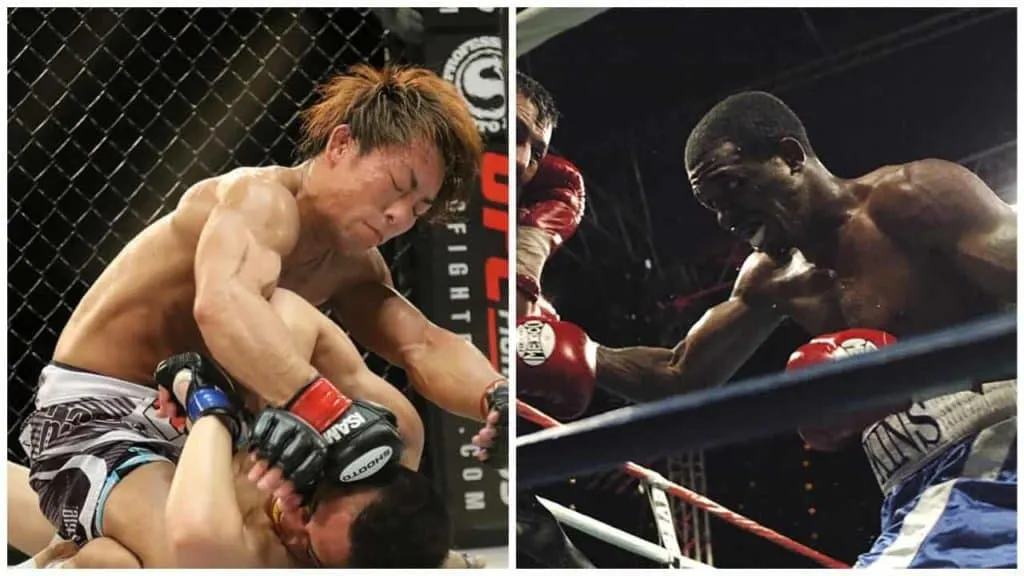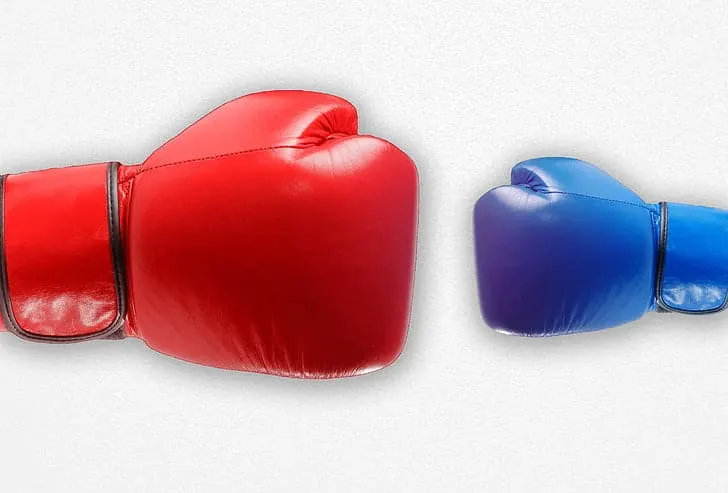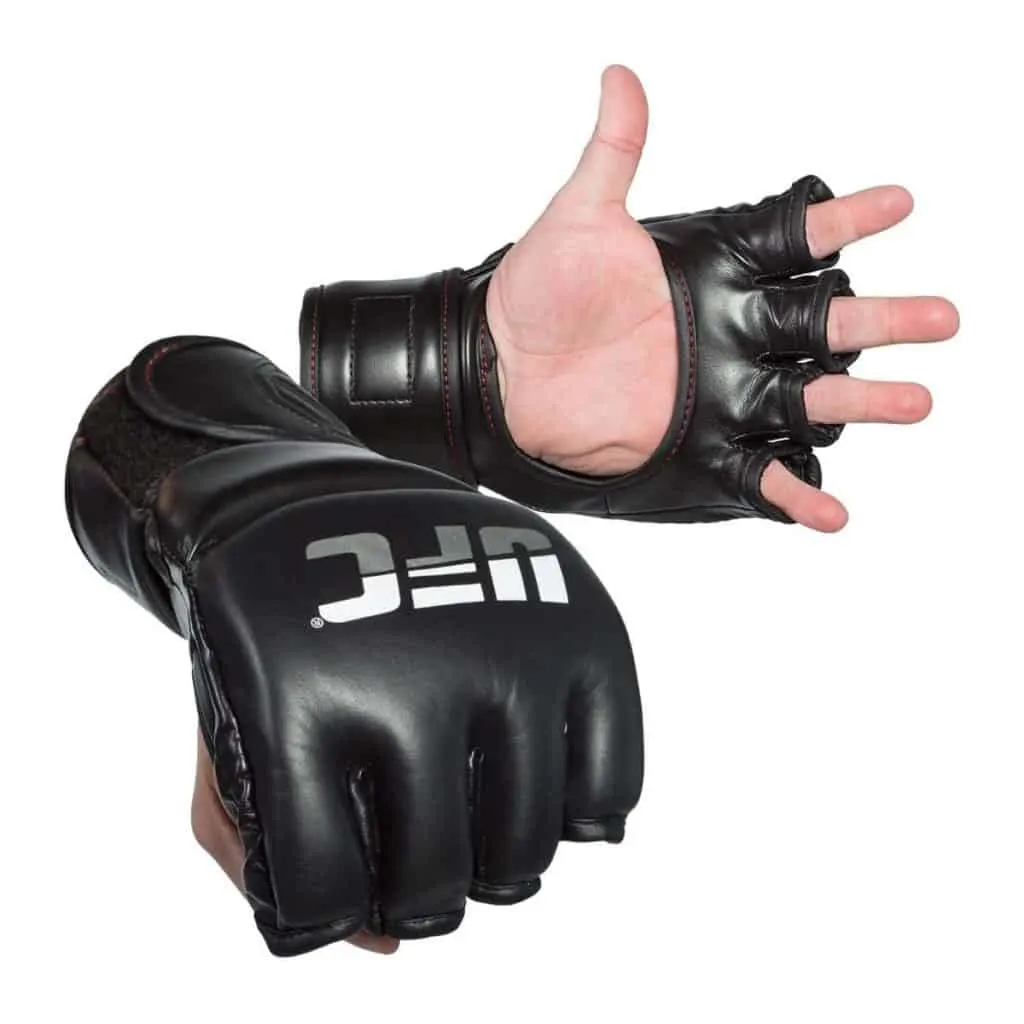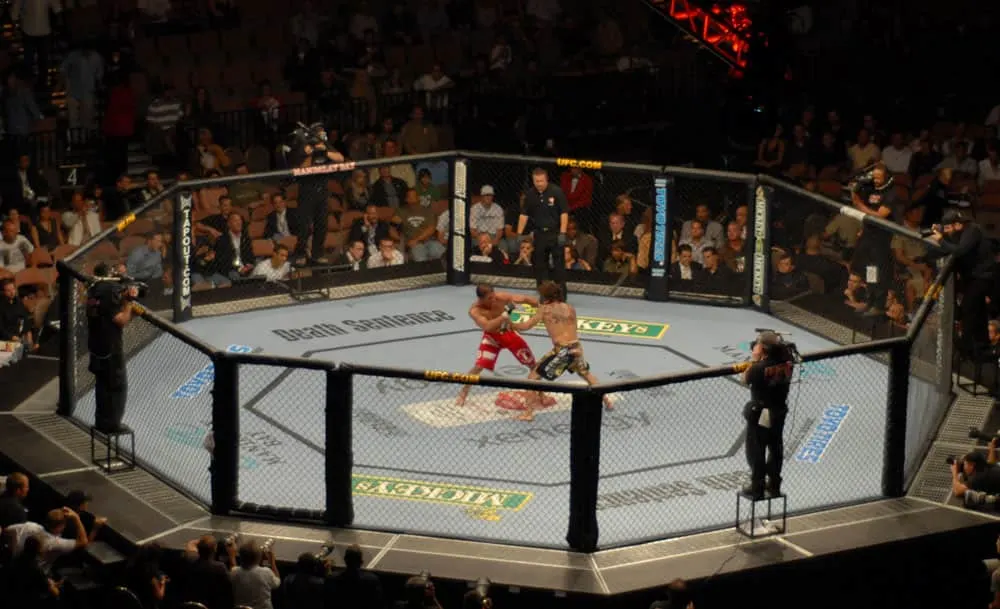
Boxing and mixed martial arts (MMA) are two of the most popular combat sports in the world. With decades of tradition, Boxing is a much older sport and more accepted around the world.
But in spite of being a newer sport, MMA has been rising at a high rate over the last two decades. It is often seen as the fastest rising sport in the world with the potential to match or become even bigger than boxing.
However, many people think that boxing and MMA share many similarities. But this couldn’t be further from the truth as they aren’t the same or similar at all. We even dare to say they are world apart when it comes to rules, styles, and even the size and shape of the ring.
So I have made a decision to make things clear once and for all. In this article, I’ll explain the MAIN differences between MMA and boxing.
Fighting Styles
Boxing
| Boxing is a standup style that only allows hand striking. Compared to MMA, it is a much simpler style simply because it has less variation. For instance, MMA fighters can throw strikes with all limbs and fight on the ground while boxing includes only the standup fight and hand strikes. |
| Although it is a simpler style, boxing is still a very effective combat style that is also good for self-defense. |
| All boxers need to have skills like footwork, head movement, and hand speed. So they are true masters in distance fighting, close brawls, and countering the attacks. These are what make up in boxing fighting. |
| Boxing covers everything you need to know to fight with hands only. Even though it may seem easier due to hand striking only, it’s a very intensive art that really delve into the science of hand striking using various tactics such as distance, footwork, offense, defense… |
MMA
| MMA allows various fighting styles and MMA fighters can use any type of martial art or mix together various styles to fight in the MMA match. No matter if its Kung Fu, Muay Thai, or wrestling, MMA allows all styles as long as they are within the official rules. |
MMA is the most realistic style and the closest you can get to legal street fighting. Unlike boxing, MMA gives a fighter much more options and it actually covers all three elements of fighting: 1.Standup fighting 2.Clinch Fighting 3.Ground Fighting |
Over the years, many combat styles have proved useless inside the MMA cage. And both coaches and fighters have realized what works in MMA and what don’t. So modern MMA stands for a mixture of the following four major arts in which every fighter needs to be good at: • Boxing (standup fighting) • Muay Thai (standup; clinch fighting) • Wrestling (ground; clinch fighting) • Brazilian jiu-jitsu (ground fighting) |
Fighting Rules
Boxing
The sport of boxing has been regulated by the famous Queensberry rules since 1867. Giving to these rules, fighters can use only their hands to strike, and they are not allowed to hit the rival below the belt area. Other strikes such as elbows or spinning strikes are also forbidden as well as strikes in the back of the head.
When a boxer gets knocked down, the rules allow them to recover and get up within the standing count of 10 and continue to fight. Also, some states and boxing associations include the “three-knockdown rule”.
A fighter who got knocked down three times within a round is not allowed to continue. But, we have to mention that most of the boxing associations like WBA or IBF actually don’t apply this rule.
MMA
MMA fights have been regulated by the Unified Rules of Mixed Martial Arts since the early 2000s. It’s worth mentioning some rules may vary between the countries and promotions when it comes to weigh-ins, anti-doping policies, and strikes. But the general rule set is the same for all.
Set against boxing, fighting rules in MMA are much, much different. First, when an MMA fighter gets knocked down, the action doesn’t stop and there is no 10-second count as in boxing. The rules allow the fighter to follow the knocked down rival to ground and finish them with more strikes or BJJ submission.
And also, the referee can make a subjective decision to stop the fight if they determine that the fighter is not intelligently defending him/herself while receiving hard strikes.
Unlike in boxing, MMA fighters can land strikes with all limbs like knees, elbows, punches, and kicks. They can throw strikes/place submissions during the standup fight, clinch, or while the rival is on the ground.
Most of these strikes are all good as long as they don’t land on the back of the head. The ones that are not allowed are “12 to 6 elbows”. This means that fighters can’t throw elbows from straight up (12 o’clock) to straight down (6 o’clock).
Also, a fighter can’t land a knee to the head while their rival has one or both knees on the ground. Since MMA fighters wear open finger gloves, they are also not allowed to poke the eyes or grab the fence/ropes.
MMA also includes a controversial “stand-up” rule. The referee can stand both fighters up if they are passive during the ground or clinch fighting. This means that fighters need to stay active and show the intent to advance to the dominant position. If they don’t, the referee has a full right to stand both fighters back on their feet and reset the action.
Weight Classes
Boxing
Boxing has 18 different weight classes while the amateur competition has 14. These weight classes are in brackets of between 3-8 pounds.
This is a whole lot more compared to MMA. The lowest weight class in the UFC is a 125lbs flyweight division (for men). Yet boxing has seven more weight classes that go below the UFC’s lowest 125lbs division. This is why boxing has so many champions and fighters who hold titles in multiple weight classes.
Also, boxing heavyweight division has no upper limit, and fighters can step in whatever weight they feel good at.
MMA
Giving to the Unified Rules, MMA has 14 weight classes with the weight difference from 5 to 20 pounds. But, leading promotions like the UFC include only eight weight classes for men and four for women.
This is mainly because the rules and regulations in MMA are always evolving and changing. So as of 2017, the Unified Rules have introduced the birth of four new MMA divisions (225lbs, 165lbs, 175lbs, and 196lbs).
These weight classes are yet to be adopted by promotions such as the UFC or Bellator. And we can’t expect that to happen anytime soon since adding more weight classes is not an easy thing.
As a result, MMA fighters need to cut more weight than boxers because the difference between the weight classes is huge. They also miss the scale more often and even back up from the fights due to the weight cut issues. And unlike in boxing, it’s very hard for any MMA fighter to become a champ in multiple weight classes.
Also, most MMA promotions include the upper limit for the heavyweight division and all fighters need to hit the scale at 265 pounds or less.
Fighting Rounds and Time limits
Boxing
Each professional boxing fight lasts from 9-12 three-minute rounds. There is a one minute break between the rounds fighters can use to rest and get the advice from the coaches. So this means that professional boxing provides 36 minutes of fighting action.
Yet, there are exceptions in which these rules don’t apply. For instance, boxers who make their professional debut are often scheduled for four three-minute rounds. The number of rounds gradually increases as they move up in competition.
MMA
In MMA, the number of rounds and time limits are the same for both women and man competition. Professional MMA fights consist of three five-minute rounds. Only the title fights and main events are five 5-minute rounds with a one-minute break between. So MMA fans can see 15 minutes of action during the regular MMA match. And 25 minutes when there is a title on the line.
Gloves!
Boxing
All boxers must wear padded gloves that protect their knuckles and the opponent from sustaining bad head or body injuries. Also, boxing gloves have a round shape that prevents cosmetic damage like deep cuts that can cause serious bleeding.

Since boxers can only use their hands to strike, their gloves have much more padding and cover bigger area. This is very important as boxers are putting their knuckles to huge stresses every time they throw a strike. So a bigger area and more padding prevent many injuries from happening.
There are many types of boxing gloves a fighter can use. Here are the most common types and their sizes:
- Bag gloves (Size: 8-16 oz)
- Sparring gloves (Size: 4-20 oz)
- Competition gloves (Size: 8-12 oz)
- Lace up gloves (Size: 8-16 oz)
MMA
MMA gloves differ from the boxing gloves in every possible aspect. First, MMA fighters wear open finger gloves that allow them to grab the rival in the grappling exchanges. This is because MMA fighters can’t score a takedown or place submissions with the closed wrists.
These gloves include less padding and a smaller area of protection. Though it doesn’t sound that way, MMA gloves actually provide a good protection as they usually include stiffer, more stable padding.

MMA gloves also come in various forms and sizes:
- Competition gloves (4-6 ounces)
- Sparring gloves (around 7 ounces)
- Grappling gloves
The shape and size of the ring
Boxing
Whether it’s an amateur or professional bout, all boxers fight in a ring. A modern-day boxing ring consists of a 16-20ft raised square platform with a post at each corner. Further, four ropes are attached to the posts which keep the fighters safe from falling outside the ring.

MMA
MMA fighters fight inside the steel cage or a ring depending on the promotion. Also, the size and shape of the cage differ between the promotions. For instance, UFC uses the famous octagon-shaped cage that has a diameter of 30ft (9.1m) and 6ft tall walls (fence).
Their competitors at Bellator, however, use a more rounded and bigger cage that is 36ft in diameter with 1018 square feet of the fight area.

Many MMA promotions around the world also use the square ring. The most famous one was the legendary Japanese MMA promotion, Pride FC.
Organizations
Boxing
Boxing is the combat sport with perhaps the most organizations (60+). Even boxing fans can often get lost by the number of champions, and belts boxing has. Yet, only the following four are the major ones:
WBA (USA), WBC, IBF (USA), WBO (PRI)
Things can get even more confusing when you realize each of these four federations has its own rules. It’s important to know that each boxing champ can fight against the champion from other organizations. So a boxer who owns WBA and WBC belts can unify all major titles by defeating a boxer who holds IBF title. For instance, Lennox Lewis unified his WBC title with the WBA and IBF titles when he defeated Evander Holyfield in 1999.
MMA
The MMA world is much different than boxing when it comes to promotions. MMA is still a young sport that doesn’t have many elite promotions. In fact, the Ultimate Fighting Championship (UFC), which was the first organization to promote MMA fights in the west, is the leader in the MMA fighting business.
Over the years, the UFC has faced many serious competitors like the famous Japanese MMA promotion, Pride FC. In fact, Pride was even bigger than the UFC at some point during the early 2000s.
But the UFC actually ended up buying Pride when the Japanese promotion collapsed in 2007. From that point, the UFC became an absolute leader in the MMA business. As the leader in the sport, the UFC is the home of the best fighters in the world, and it has the biggest audience as well.
There are other MMA promotions like Bellator and Japanese ONE FC but their market share and influences are very small compared to the UFC.
